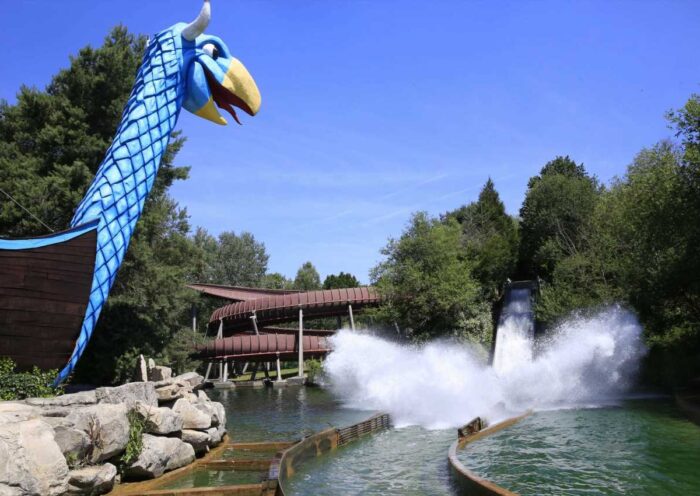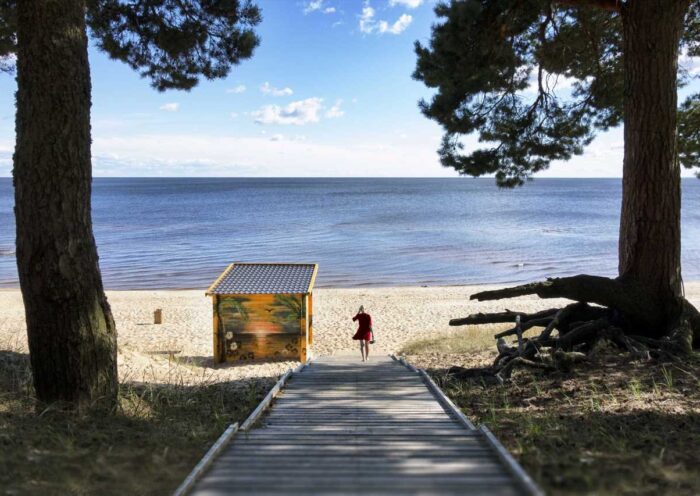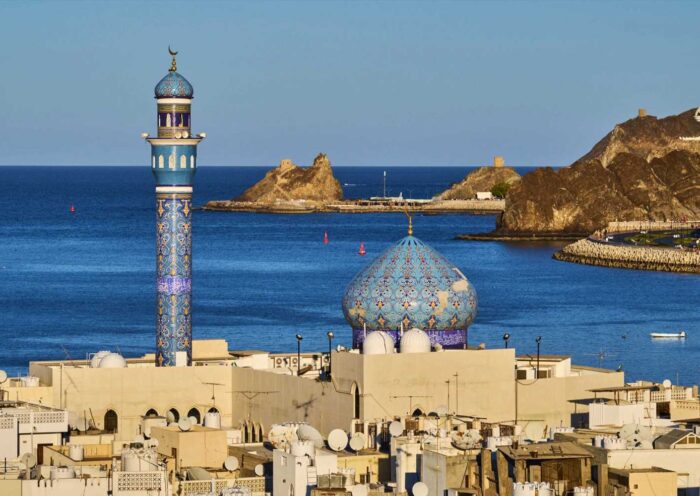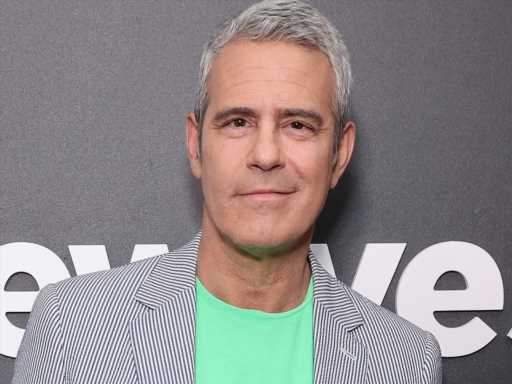Quiz: What Is Your Skin's Undertone?
When it comes to choosing the most flattering makeup hues (and especially when finding a concealer or foundation shade), it’s important to consider your skin’s…
My Lips Always Burned in the Sun Until I Discovered This Product
I’ve learned the hard way that wearing sunscreen every day is non-negotiable. Ever since I started taking oral acne medication, I noticed that my skin…
It's time we stopped feeling embarrassed about our armpits
Your underarms are fine, just the way they are. Armpits are a part of the body women often feel uncomfortable with and, despite us all…
Everyone on TikTok Loves This $10 Mascara, and Now I Know Why
Fun fact: I have never worn mascara more than I have in the past year. Allow me to explain. My relationship of eight years ended…
Parents get Xmas-shamed after they lied to their kid for 15 YEARS so they could eat all the Ferrero Rocher themselves | The Sun
TWO parents have taken drastic action to ensure they could enjoy piles of Ferrero Rocher without sharing any of the chocolates with their daughter. According…
I was sick of being fat but still eating McDonald’s 4 times a week so I won a new body for Xmas instead of going on diet | The Sun
WEIGHING 20st, Amy Harris’s weight was taking its toll on her health as she struggled to walk under her bulk. But despite this, the 35-year-old…
Sainsbury’s is handing out FREE boxes of mince pies and After Eight’s chocolates to lucky shoppers | The Sun
FANCY a sweet treat but don't have the budget after getting your Christmas food shop in? Need something to cheer you up after a long…
I tried Glasgow's worst rated takeaway – the smell had me fearing for my life, I had to escape | The Sun
THOUGH the name Best Kebab suggests a top notch takeaway, the reputation of the aforementioned Glasgow eatery represents everything but. Officially the city’s lowest rated dining spot…
Covid poses a ‘serious threat’ as latest viral strain sweeps US, warns new study
Lorraine: Dr Hilary warns of potential rise in Covid cases Covid poses a “much more serious threat” than the flu, a new study revealed, as…
Horrific winter bug ‘worse than any cold’ symptoms as it sweeps UK
Norovirus: How to prevent catching the illness With all the different viruses that spread in the colder months it feels almost inevitable that we will…
New Covid strain could be ‘more severe’ and take ‘longer’ to recover from
Lorraine: Dr Hilary warns of potential rise in Covid cases People infected with a certain strain of Covid could “take longer to recover” a GP…
Can certain foods really reduce your cancer risk?
Save articles for later Add articles to your saved list and come back to them any time. According to the Cancer Council, one in two…
Gordon Ramsay’s perfect Yorkshire puddings recipe
While there is a national debate as to whether Yorkshire puddings should even be on Christmas dinner, they’re a great addition to a Sunday roast.…
Easily prevent half an avocado from turning brown with clever method
Whether you’re spreading avocado on toast or making guacamole, leaving only half of an avocado might cause the inside of the fruit to transition from…
Make this sprinkle sandwich cookie as the perfect gift this Christmas season
Is that time of year when people will be leaving cookies out for Santa, and you can surprise him with these incredibly festive sandwich cookies…
I’m making my entire Christmas dinner in an air fryer
Beverley Jarvis, 74, is a cooking a festive three-course meal for eight using her Instant Vortex Plus machine. An air fryer expert, she hopes to…
Christmas Number One odds: The songs tipped to take the 2023 festive crown revealed | The Sun
THE race is on to become the next Christmas Number One. It comes after it was revealed that LadBaby – who has bagged the top…
BBC hits back at mounting University Challenge 'elitism' complaints – insiting 'we totally reject this' | The Sun
THE BBC has responded to increasing complaints about 'elitism' on University Challenge, firmly stating, 'we totally reject this'. A campaigner has asked the broadcaster to…
Who is Valerie in Coronation Street and how is she linked to Peter Barlow? | The Sun
CORONATION Street introduced viewers to a brand new character last night in the form of Valerie. She arrived on the ITV cobbles to chat to…
Katie Griffiths pregnant! Waterloo Road star announces she’s expecting first child with husband
Waterloo Road star Katie Griffiths has revealed she's expecting her first child with husband Matthew Wardle. The actress, best known for playing Chlo Grainger in…
Strictly fans split over Ellie and Vito romance as some beg ‘leave them be’
Strictly Come Dancing stars Ellie Leach and Vito Coppola have continued to keep fans on their toes as they addressed the ever-growing rumours surrounding their…
Top European theme park announces brand new ride and musical show launching next year | The Sun
A TOP European theme park has announced several brand-new attractions ahead of its 35th anniversary next year. The French theme park already has 50 attractions…
The Christmas items you should avoid packing in your carry-on luggage
Revealed: From snow globes to cranberry sauce, the Christmas items you should AVOID packing in your carry-on luggage – and why you shouldn’t wrap gifts…
The European beach Brits won’t have heard of – with singing sands and nearby holiday village | The Sun
MOST Brit holidaymakers wouldn't have heard of this tiny beach in Europe, which is home to singing sand. Europe's most famous beaches are in countries…
The mid-haul destination dubbed the 'new Dubai' with its own tropical islands – and flights from £68 | The Sun
THE rise in popularity of Dubai as a holiday destination has been staggering. Over the last 30 years or so, it has been transformed from…
‘I earn £27k a week as a stripper and professional girlfriend for rich bankers’
A woman who ditched a banking job to work as an escort and stripper says that she rakes in more than £27,000 ($30,000) a week…
The Duke of Edinburgh takes on number plate used by Prince Philip
The Duke of Edinburgh takes on number plate used by Prince Philip in touching nod to his late father Prince Edward was pictured at the…
'I'd rather see a pay rise for doctors than backseat politicians'
NANA AKUA: I’d rather see a pay rise for frontline doctors than backseat politicians Most of the time, workers can expect a pay rise only…
People reveal receiving random items in their Christmas food shops
People reveal receiving random items in their Christmas food shops they placed months ago – including 144 toilet rolls, five kilos of bananas and expensive…
Reddit Is Stunned by a ‘Disgustingly Manipulative’ New Mom & Her Secrecy Is Unbelievable
Listen, we’ve heard a lot of unbelievable stories about secrecy around pregnancies. There was someone recently who lied to her husband about the sex of…
Kim Kardashian Says She'll Never 'Throw Away' This Controversial Family Member Due to His Bond With Her Kids
Kim Kardashian doesn’t condone any of the hurtful mistakes Tristan Thompson has made — namely his various moments of public infidelity while in a relationship…
Andy Cohen's Son Ben Attended His First Concert & His Connection to the Musician Made the Experience Extra Special
Andy Cohen’s son Ben got to experience his first concert at just 4 years old — and the musician is not only a globally-known star,…
These Genius Microfiber Mop Slippers Have Kids ‘Begging’ To Help Clean the Floors & Shoppers Say It’s Such a ‘Parenting Win'
If you purchase an independently reviewed product or service through a link on our website, SheKnows may receive an affiliate commission. If you’re a parent…
Thomas Rhett Is Melting Hearts With This Sweet Memory of Meeting His Daughter Willa
Thomas Rhett has us feeling all ooey gooey on the inside after sharing a memory of meeting his adopted daughter Willa. During a recent appearance…

































